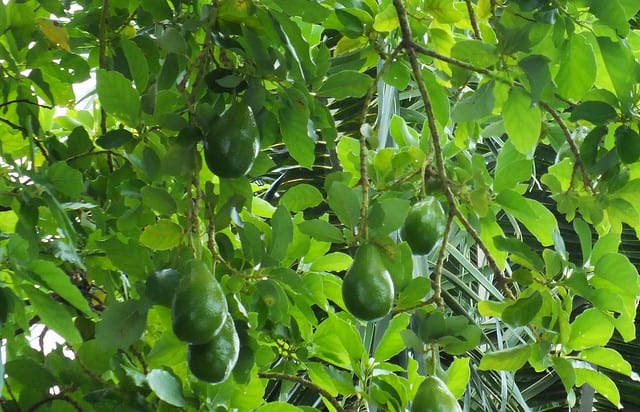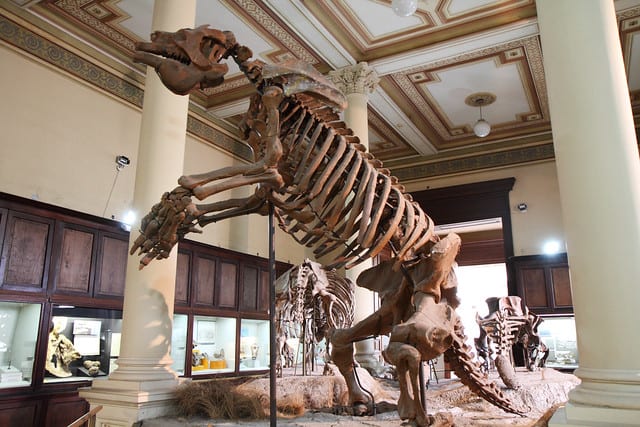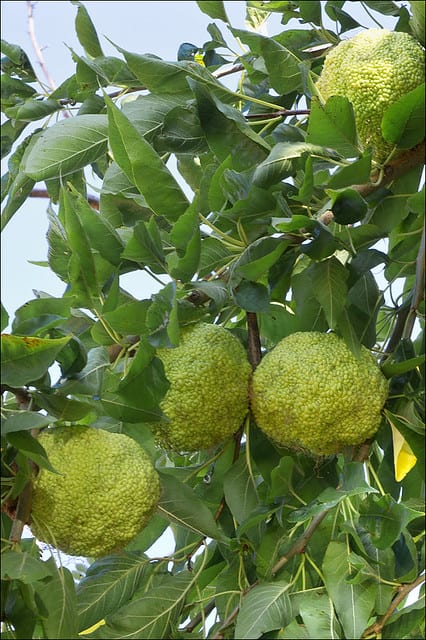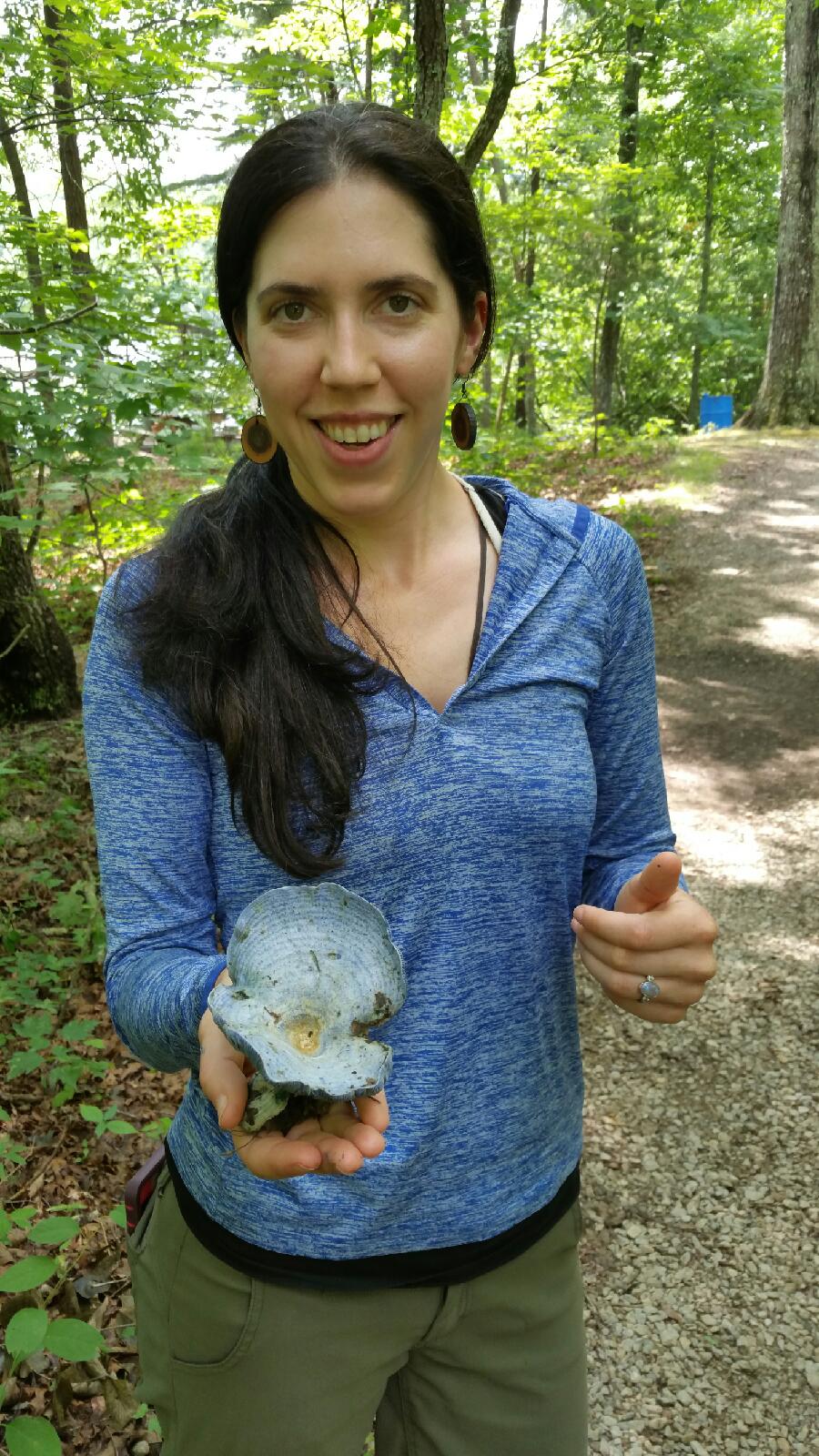If you've ventured outdoors in the southeast over the last couple weeks, then you may have noticed that things are looking distinctly…yellow. Everywhere you turn, cars and sidewalks are covered in a fine layer of yellow ‘dust'. The hazy quality to the air, as any sufferer of seasonal allergies will be happy to inform you, is a veritable sea of pollen grains from native trees with a single goal: seed production.
Some of the most prolific pollen producers in the southeast such as pine trees (genus Pinus) and oaks (genus Quercus) utilize animal dispersal to spread their seeds. Birds, chipmunks and squirrels carry the seeds, conveniently pre-packaged in portable and tasty fruits, away from the parent tree and ‘plant' them in a new location. This arrangement benefits both parties: the animal disperser gets a tasty meal and the plant, hopefully, will continue the legacy of its species in a new location. But what is a plant to do when its animal partner simply disappears?

The fruit of many species exhibit traits indicating they may have coevolved with animal partners to disperse their seeds, partners which have since gone extinct. Often these fruits are either very large, as in the case of avocado and osage-orange, or encased within a hard protective layer like honey locust and Kentucky coffee tree. The mammoths, mastodons and giant sloths that once roamed North and South America are considered to be the original animal dispersers of these seeds. In all likelihood, plants such as the avocado evolved alongside such megafauna, consequently developing fruit attractive to these large mammals.

The ancestors of these plants would likely only look vaguely reminiscent of the plants we know today. It was their coevolution alongside such megafauna that helped shape them into a closer approximation of their modern form. After all, what hungry mastodon could resist the allure of deliciously fatty avocado fruit or the sugary sweetness of honey locust pods? After a delicious snack the mastodon would be on its way and would, somewhere down the road, defecate, leaving behind the seeds from its previous meal. Thus, the avocado or honey locust would move forward into a new generation, spread far and wide by their animal partners. Yet between the end of the late Pleistocene and beginning of the Holocene era, many megafauna rapidly vanished into extinction for reasons that remain unresolved. Without their animal partners (barring human intervention), these plants were often marooned in restricted ranges, reducing genetic diversity. Reduced gene flow led to increased susceptibility to pathogens, pests, and environmental stressors, which strongly affected their populations.

Today, these plants are anachronisms on the landscape. Without their megafaunal seed dispersers, fruits often fall to the ground beneath the parent tree and rot, and the seeds fail to germinate. These displaced species are easy to spot on the landscape if you know what to look for; osage-orange and honey locust trees are often littered around the base with their own fruit, essentially trapped in place. You can often recognize these species by the restricted range in which they grow without human intervention, such as Kentucky coffee tree, which both requires scarification (breaking up of the tough outer seed layer, previously accomplished by the stomach acids of megafauna) and dispersal in order for seeds to grow.

Luckily, many of these species have proven valuable to human populations in the thousands of years since their animal partners ceased to walk the earth. Osage-orange, Kentucky coffee tree, avocado and honey locust were valued and utilized for a variety of purposes by indigenous peoples and later by European settlers who learned of the various benefits of these plants and as a result are still with us today. However, there is a cautionary tale here as well. With rapidly increasing rates of species extinction over the previous decades and no relief in sight, we must consider not only the species that are vanishing daily, but also their ecological partners, who must find a way to continue on without them. Adaptation rates of plants and animals are typically far too slow to weather the storm of such a rapid rate of change. The choices we make today are largely responsible for creating the marooned species of tomorrow.
About the Author
 |
Megan Buland is a graduate student in the Warnell School of Forestry & Natural Resources at UGA, where she studies forest health and microbial community ecology. When not visiting field sites or working under the flow hood, Megan is passionate about environmental communication and education, and exploring in nature. She enjoys rock climbing and hiking and loves her dog, Madra. You can reach Megan at megan.buland@uga.edu. More from Megan Buland. |
About the Author
- athenssciencecafehttps://athensscienceobserver.com/author/athenssciencecafe/April 17, 2020
- athenssciencecafehttps://athensscienceobserver.com/author/athenssciencecafe/April 12, 2020
- athenssciencecafehttps://athensscienceobserver.com/author/athenssciencecafe/April 3, 2020
- athenssciencecafehttps://athensscienceobserver.com/author/athenssciencecafe/March 30, 2020







